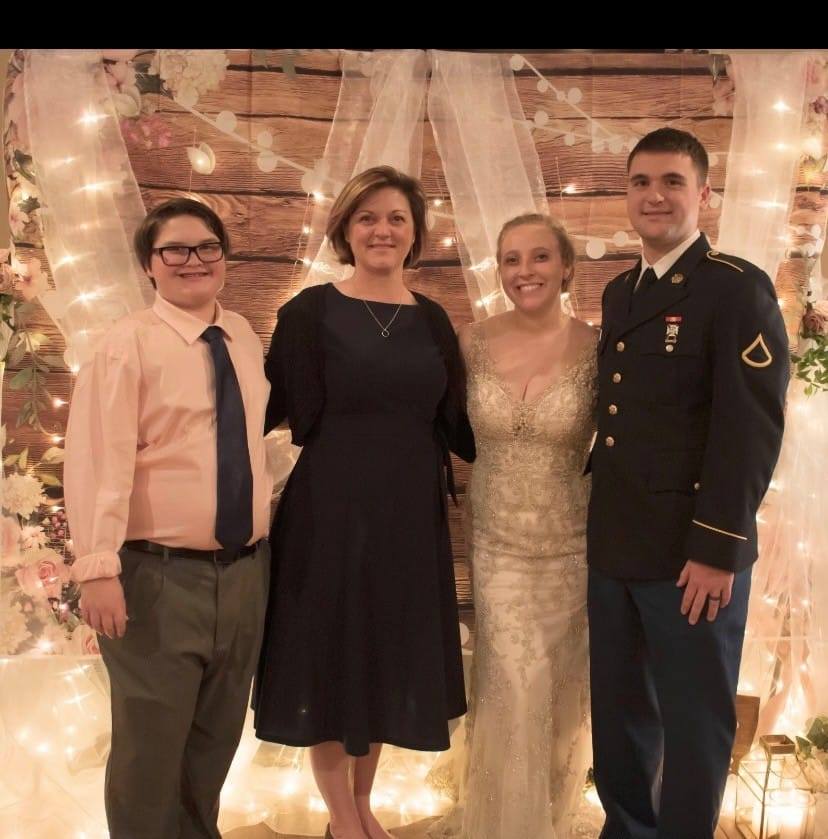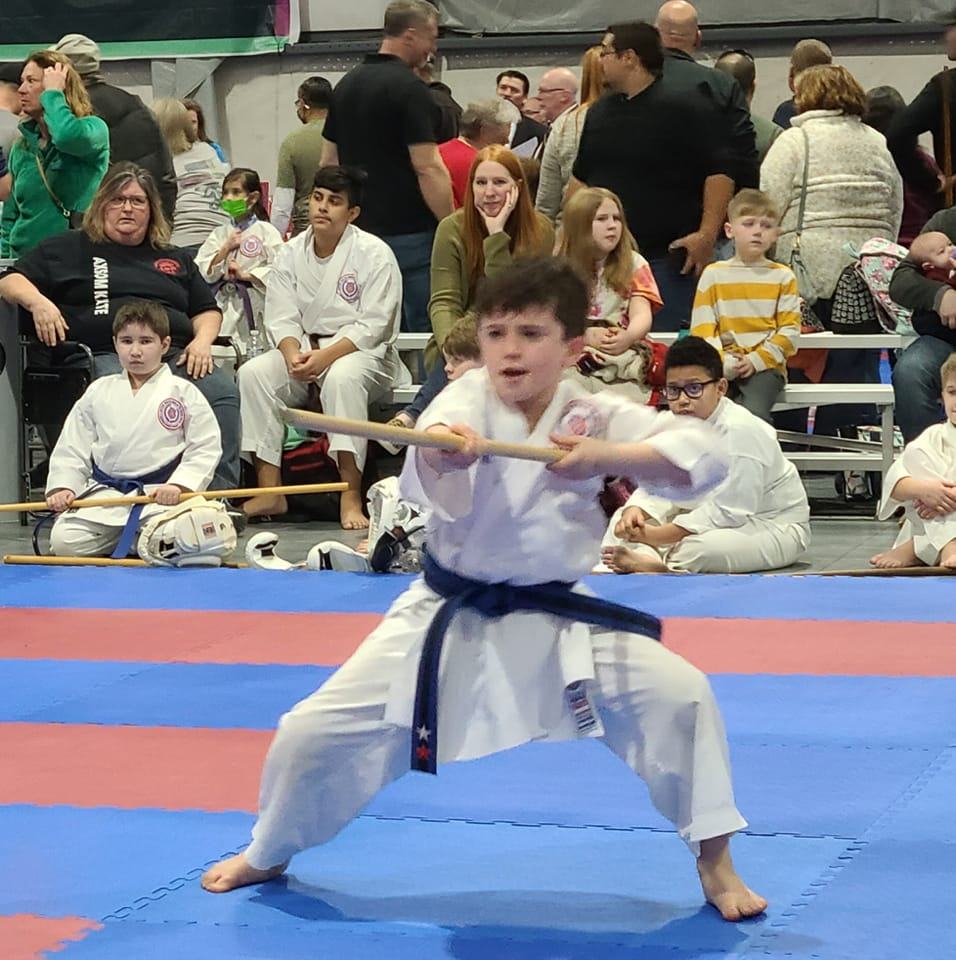
Justin Milliken
via Google
Hands down the place To go in the Virginia area, great with kids, teens and adults. Sensei Moose and his crew ROCK! If you want to learn how to compete and win in life give them a call.

Makayla Shaw
via Google
Axsom Martial Arts is amazing! I’ve been going to the dojo for about 3 years at first to watch my best friends son and now I bring my son. It’s a great atmosphere and all the teachers are great with kids of every age. I put my son in to not only learn but to help his speech and it has improved greatly in the short time he was been going.

Sarah Taylor
via Google
My son has been apart of the Dojo Family for a little over a year. I love the change I’ve seen in his confidence. All of the Sensei’s are patient with all of the students. They learn and practice things that will help them in every aspect of their lives. Responsibility, patience, and a hard work ethic.

Ricardo Pinheiro
via Google
A Traditional Karate Dojo.
Loved to visit there.
A Dojo that teaches you more than Karate and makes you feel part of the family.
Sensei Moose and his student are absolutely amazing.
A place that I recommend 100%

Petes Custom
via Google
I HAVE A GREAT NIECE SHE HAS BEEN WITH THIS DOJO FOR 3 YEARS SHE IS AMAZING AND SO ARE THE PEOPLE THAT WORK HERE. IAM SO PROUND TO BE APART OF THE DOJO FAMILY THANK YOU SENSEI FOR ALLL YOU DO FOR THE KIDS AND PARENTS.

Karen Hunt
via Google
This place has definitely impacted my kids in a very positive way. Moose is a fantastic sensi. Do yourself a favor and give this place a chance before believing the negative reviews. You won't regret it.

Melinda Banton
via Google
This is the best dojo!! Our son has been there 2 years and absolutely loves it. He started at 7/8 and is challenged to be the best he can be in a supportive and structured manner. Sensei Moose is phenominal...along with his other senseis! Let me say...martial arts is not for those looking for participation trophies or soft punches - its a fight, self defense sport that equips children with the ability to learn respect, accountability and confidence. Anyone complaining about contact in a contact sport has no business being in martial arts.

Edward Gordon
via Google
Greatest dojo ever very well ran very inexpensive great instructors

Brandee Knoll
via Google
My son has been going to Axsom Martial Arts for 2 years now, and we absolutely love it! Just signed my youngest son up 2 weeks ago! The instructors are patient, kind, helpful and fun! Sensei Moose (John Axsom) is loved by all the kids at the dojo and parents! My kids have learned respect, courage, discipline, routine, consistency and defense! Thank you Sensei and instructors for all your hardwork and dedication to the kiddos!!!

Lester Hicks
via Google
Great personalized karate instruction in a small store-front. Taking home medals in local, state, regional, national, and international competitions.

Randy lewis
via Google
My son has never been this dedicated to anything! These sensei’s are amazing. I highly recommend this DOJO!

Amanda Lujan recommends Axsom Martial Arts
via Facebook ·
I went in to AMA and Sensei Moose and all the staff made me feel comfortable and right at home. Coming to Axsom Martial Arts is one of the best decisions I've made. I will be signing up my 4 year old very soon!

Tom Ward recommends Axsom Martial Arts
via Facebook ·
Teachers who teach from the heart, not just for the money.

Leah Nydam recommends Axsom Martial Arts
via Facebook ·
Love this place! Sensei teaches karate AND discipline!

Will Gorman recommends Axsom Martial Arts
via Facebook ·
It as well run dojo for all ages! Excellent instruction!

Donnie Medlin recommends Axsom Martial Arts
via Facebook ·
we have been with axsom martial arts and we have had the best experience for my granddaughter that I could have ever asked for

Jose G. Perez recommends Axsom Martial Arts
via Facebook ·
It is a very clean, highly regarded Dojo.
Very skilled Senseis. It had been wonderful for my ADHD boy he is learning to control himself and channel his energy, I highly recommend this Martial Arts Dojo.
I'm no expert in the dicipline but have noticed the change on my boy.

Tiffany Baxter Carney recommends Axsom Martial Arts
via Facebook ·
I never thought my kids would do martial arts but they love it! I now have three kids (ages 6, 10, and 12) at the dojo and they are learning so much. I love that Moose demands the best of the kids but also gives grace and teaches them that mistakes aren't the problem, the problem is when you quit after the mistakes. All the sensei's teach more than just karate, they teach life skills. Definitely recommend this dojo to anyone who asks me about it.

Chris Gordon recommends Axsom Martial Arts
via Facebook ·
Champions are trained in this dojo. A second family for sure❤️

Casey Koster recommends Axsom Martial Arts
via Facebook ·
Axsom martial arts is an amazing place! Kids learn amazing skills, and have a great time doing it. I love the respect that the kids are taught for everyone, and how it’s more of a family than a dojo.

Austin Galeski recommends Axsom Martial Arts
via Facebook ·
I've loved, and am still loving every second I've spent at Axsom Martial Arts. It has done nothing but good for my life. It has helped me develop a strong work ethic, sense of responsibility, and an open mind to be able to understand and adapt to most situations. "Building character; Teaching Karate" is an understatement when it comes to Sensei Mooses business!



















